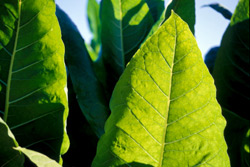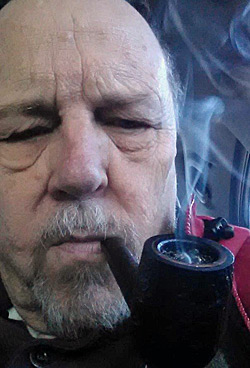Fred Brown
 Okay, I am losing it. The Food and Drug Administration has re-written its so-called rules.
Okay, I am losing it. The Food and Drug Administration has re-written its so-called rules.
I’m not making this up. The FDA has decided that it needs to define a tobacco product as any product that is "derived from tobacco that is intended for human consumption."
In other words, a tobacco product is anything that comes from the tobacco leaf, which has been planted into the soil of Mother Earth and has produced a leaf of tobacco.
Huh?
We are paying out millions of dollars a year to fund this idiot agency.
 I mean, I have known some farmers who were not the sharpest tools in the work shed who could have told you that if you plant tobacco, watch over it, care for it, get the proper amounts of rain when it is most needed, you are more than likely going to come up with a tobacco product!
I mean, I have known some farmers who were not the sharpest tools in the work shed who could have told you that if you plant tobacco, watch over it, care for it, get the proper amounts of rain when it is most needed, you are more than likely going to come up with a tobacco product!
This notion of when a tobacco product becomes an actual tobacco product arose in September when the FDA wrote in the Federal Register that it needed to have a "clarification of when products made or derived from tobacco are regulated as drugs, devices, or combination products."
The FDA actually wrote that there is "ambiguity" around tobacco when it should be regulated as a drug, a device or some sort of combination product," and felt compelled to define tobacco.
Huh?
There is ambiguity (FDA’s description) of when tobacco is tobacco? Or when it is a medicine?
You gotta be kidding me!
And then the FDA goes on to say that it wants to make sure we understand and can distinguish products "made or derived from tobacco," that are intended for medical use from products that are set aside for medical use.
Huh?
You mean to tell me there is a tobacco product that is put aside by docs and nurses especially for medical use?
"Why, yes, doc, I’ll have a cigar with my flu shot. Makes it go down a lot easier."
"Uh, nurse, would you mind handing me my pipe. I would like to fire up some good ol’ Virginia while you wrap my head with that bandage. I took a bad fall after reading a report from the FDA that said, yes, Virginia, tobacco is really tobacco."
I did not realize that we had a medical cigar or medicinal pipe tobacco, snuff, or some combination of all the above. I am all for it, though.
This just has to be a new find by the FDA. Their researchers have been busy earning their bloated salaries by coming up with a medical tobacco product and defining tobacco as tobacco.
I promise I am not making this stuff up. You are free to read it just as I did if you go to the FDA’s Center for Tobacco Products.
My grandmother, Maude, who was a peanut farmer in South Georgia for all of her life, would say this is the kind of thing that gives farmers a bad name.
Maude smoked a corncob pipe and dipped snuff at the same time. She said it calmed her. And, you can take it from me, you wanted Maude calm whenever possible.
Otherwise, somebody was apt to be injured in the resulting confusing and conflagration of events.
I heard her comment on many occasions about several local folks, who she said, were dumber than an anvil.
 Not being a tobacco farmer, but having worked on Maude’s fields of peanuts and her ample vegetable gardens, and if I understand the rules of horticulture, if you plant a tobacco seed, you are likely to get a tobacco plant.
Not being a tobacco farmer, but having worked on Maude’s fields of peanuts and her ample vegetable gardens, and if I understand the rules of horticulture, if you plant a tobacco seed, you are likely to get a tobacco plant.
Said plant gets worked hard, massaged, cut, crushed, pressed, sliced and diced into some sort of tobacco product.
I suppose it is possible that you could plant a tobacco seed and come up with a hybrid of some sort. Perhaps half cigar leaf and half collard green.
Tobacco is unmistakable for the most part. It starts out as a wide green broadleaf on a stalk. When harvest time rolls around in August, plants in the wide fields look like old men bent over a pint of ale and reminiscing about their yesterdays, when they were straight and strong.
Tobacco harvesters cut near the plant’s base, and then string the leaves on a sharp metal spear tip on a tobacco stick. Usually one stick holds five or six plants, stabbed and slid down the tobacco stick.
Loaded sticks, resembling a shaggy bug with wide green legs, go next to a barn where workers hang the sticks in tiers from the rafters to the ground. Here the leaves dry from green to brown that is so familiar, even if you are not a practitioner of the weed.
It takes about six, maybe eight weeks for this color transformation to take place.
Next comes the stripping of the leaves and grading. That process usually begins around the first of November, when the stem of the leaf dries to a delicate brown.
 After grading, leaves are tied up together according to their grading status.
After grading, leaves are tied up together according to their grading status.
Of course, this is far more information than you wanted to know, or needed to know, about tobacco, the weed of our desire.
Maybe some of those FDA regulation writers need to head out to a tobacco farm in, say, North Carolina, Kentucky, Virginia or Tennessee, to learn that tobacco really is tobacco.
It takes hard work to get it to market. And after the leaf makes its way to a store, it has already supported the farmer and his family, the many field workers and their families, the manufacturers and finally the retail shop owners.
One little ol’ plant that has the FDA in a dither funds that entire superstructure and more.
You would think that keeping people employed, supporting a creaky economy would be cheered on in Washington and the FDA.
It is not easy being tobacco. The leaf gets no respect. It is hated by many, loved by few, and is actually looked upon by the FDA as a monstrous non-thing that has to be eradicated.
Therefore, I raise a toast to tobacco. May the leaf live long in our pipes and cigars and in hearts and minds.
May it give the FDA regulators heartburn and nightmares.
In addition, maybe, just maybe, one day FDA regulators will understand that a law is only a law, but tobacco is tobacco.
|
|















I have a feeling that this it the FDA’s first steps in regulating electronic cigarettes. The nicotine is extracted and added to the fluid in the e-cigs but that is currently not regulated. This regulation will drive out the small businesses that a thriving in this new trend due to creating testing requirements that costs tens of thousands of dollars for the fluid as well as the devices. I personally used an electronic cigarette to stop smoking cigarettes. Until I decided to start smoking a pipe, I had completely quit tobacco for 3 years. My wife has not smoked in 5 years. This has been the true benefit of the e-cig.
Washington can turn the simplest of things into an unruly monster. Then of course they need the funds to deal with it. Legalize Pot while you criminalize tobacco, How’s that for impaired logic.
Funny article, Fred. I enjoyed it immensely.
Great article as always, Fred.
I’m guessing that e-cigs have probably sent the anti-tobacco crowd into collective delirum tremens. Because half the fun of being a kill-joy regulator has always been about depriving people of the enjoyment of tobacco products.
1984… Anyone feel me? Anyone at all?
I have to concur with CMORGAN. The problem is, how do they determine that the nicotine used is from a tobacco plant? It is considered “pharmaceutical grade” nicotine that is used in e-cigarettes. Pound for pound, the leaves of the tomato plant contain more nicotine that tobacco.
If I were wanting to start a business, I would make friends with all the tomato farmers and ask if I can have their leaves. Go into the nicotine business and make sure it is labeled “100% Tobacco Free Nicotine”! Take THAT, FDA.
Great article!